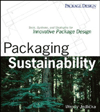Consumers rank ease of package use over sustainability

Of more than 500 consumers who took part in a study conducted on behalf of packaging solutions specialist Payne (www.payne-worldwide.com), 85% said they had experienced some frustration with packs. Of those, 49% cited food packaging as the cause of this frustration.
“Understanding consumer attitudes and priorities is fundamental in enabling packaging manufacturers to work successfully with brand owners in the development of effective pack solutions,” says Martin Dallas, Payne’s managing director.
A theme that continued throughout the study was frustration in opening. Even when unprompted, difficulties with opening generated the strongest response with “difficult to open, tear or rip easily” being highlighted as the major frustration by 32% of respondents. In response to a prompted list of frustrations this increased even further as 81% cited difficult to open or having to use a tool as a top frustration.
Of the people who said they were frustrated with packaging, 29% cited clamshell packs as the packaging format that caused this frustration. The top 10 packaging formats people cited were: Clamshells, paperboard boxes, bag/packets, trays with lids, envelopes, shrink wrapping, plastic bottles, aseptic packs/cartons, box with ties and roll wrap.
The survey found that although difficulty of opening packs causes frustration across age groups, vacuum packed foods or packaging that requires a tool to open are a particular concern for older people.
Too much waste/packaging was also a concern for the survey respondents, but the figures suggest not to the same degree as pack functionality. For example, 8% of people mentioned this factor unprompted, whereas almost half listed this concern among their top three frustrations in response to a pre-defined list.
“It is very clear from this research that functionality is a major part of what consumers consider to be good packaging,” says Dallas. "A particularly important aspect of our research was that the initial responses were unprompted so these really do get to the heart of what frustrates and annoys people. For example, concerns about over-packaging only became more prevalent when consumers were prompted on the subject, whereas difficulties in opening a pack or having to use scissors or other sharp instruments to gain entry were very much front of mind all the time.”
Payne says its Packaging Resolved approach will not only enable brand owners to satisfy the need for functionality but also deliver additional benefits that will help to strengthen a brand’s relationship with its consumers.
“Consumers are seeking functionality in their packs but brand owners need multi-functionality where elements of the pack are able to carry out more than one role,” says Dallas. “For example, a tear tape or label for easy-opening can also provide a means of communication between a brand and its consumers; a resealable pack can combine user-convenience with product protection, portion control and the minimization of food waste.
The company will soon launch its own Packaging Resolved Facebook page, which will encourage consumers to provide feedback on their favorite and least favorite pack types.
“Packaging is the key medium by which to communicate the brand and our research shows that consumers respond positively to packs that are fit for purpose,” says Dallas. “When packaging works, it makes people feel good about the product; conversely, a poor pack can have a deeply negative effect on their perception of the brand. Packaging solutions that focus on opening, closing, informing and protecting can resolve many of the typical consumer pack frustrations and at the same time deliver added value and enhance brand image, to the extent of becoming an integral part of the brand experience."
Looking for a reprint of this article?
From high-res PDFs to custom plaques, order your copy today!









